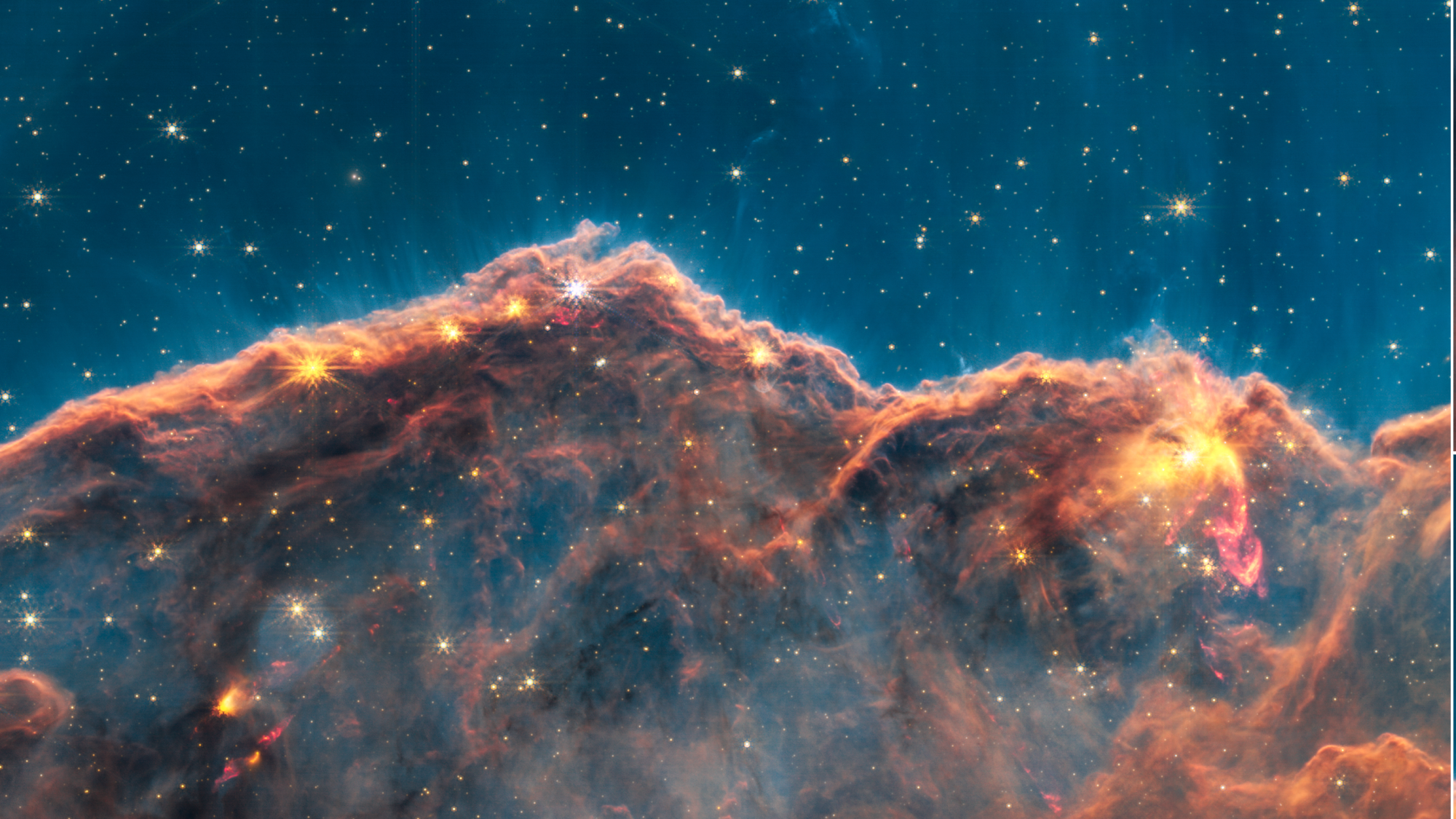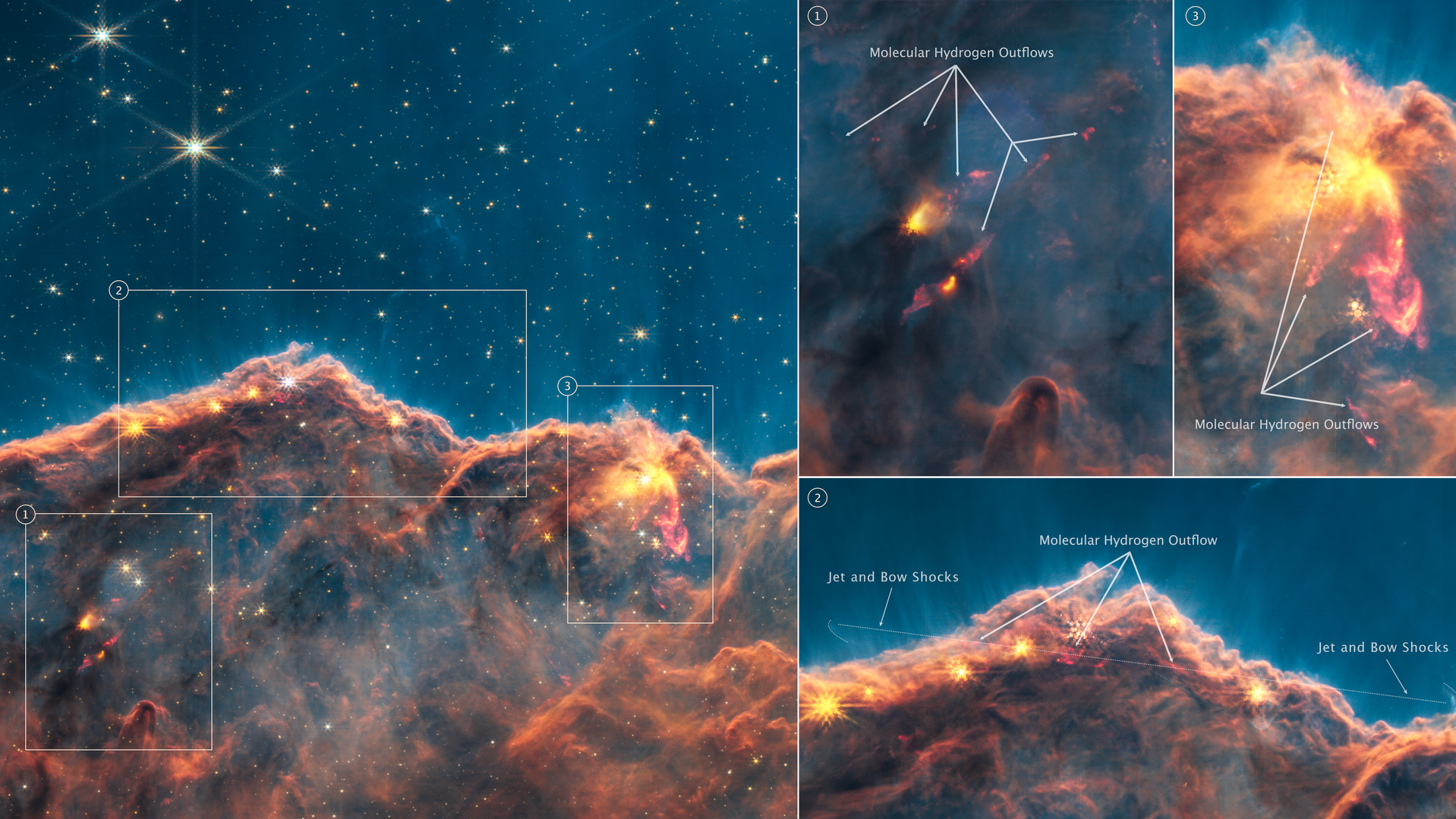Baby stars throw cosmic tantrums in iconic James Webb Space Telescope image
The stunning image hides jets and outflows from protostars.
Scientists reexamining the James Webb Space Telescope's iconic "Cosmic Cliffs" image of the star cluster NGC 3324, have spotted a rare sight: protostars emitting two dozen powerful jets and outflows.
Although the process itself is not a surprise — astronomers were already aware that the phenomenon occurs during stellar formation — it has been difficult to image due to the dense clouds of dust and gas that surround young stars. The Hubble Space Telescope, for instance, has also imaged NGC 3324, but could not see the jets in visible light. The James Webb Space Telescope, however, has more powerful equipment and observes in infrared light, which revealed the jets, some of which stretch multiple light-years long.
But the jets weren't actually visible in the original "Cosmic Cliffs" shot. "In the image first released in July, you see hints of this activity, but these jets are only visible when you embark on that deep dive — dissecting data from each of the different filters and analyzing each area alone," Jon Morse, an astronomer at the California Institute of Technology who participated in the research, said in a statement. "It's like finding buried treasure."
Gallery: James Webb Space Telescope's 1st photos

What's more, these energetic emissions are fairly brief, making them even more difficult to spot. "Jets like these are signposts for the most exciting part of the star formation process," Nathan Smith, an astronomer at the University of Arizona and a co-author of a new study on the discovery, said in the statement. "We only see them during a brief window of time when the protostar is actively accreting."
During this period, the baby stars are snatching gas and dust from their environment in order to grow. The window during which protostars accrete typically lasts a few thousand to 10,000 years — a blink of the eye in a life of a star. Accretion is a messy process, however, and most stars in this phase spit out some of the material, forming jets and outflows like those seen by Webb.

Scientists are particularly excited about these specific jets, because they appear to be forming in an environment similar to our sun's birthplace.
Get the Space.com Newsletter
Breaking space news, the latest updates on rocket launches, skywatching events and more!
"It opens the door for what's going to be possible in terms of looking at these populations of newborn stars in fairly typical environments of the universe that have been invisible up until the James Webb Space Telescope," Megan Reiter, an astronomer at Rice University in Texas who led the study, said in the statement. "Now we know where to look next to explore what variables are important for the formation of sun-like stars."
The research is described in a paper published on Oct. 4 in the journal Monthly Notices of the Royal Astronomical Society.
Follow Stefanie Waldek on Twitter @StefanieWaldek. Follow us on Twitter @Spacedotcom and on Facebook.
Join our Space Forums to keep talking space on the latest missions, night sky and more! And if you have a news tip, correction or comment, let us know at: community@space.com.

Space.com contributing writer Stefanie Waldek is a self-taught space nerd and aviation geek who is passionate about all things spaceflight and astronomy. With a background in travel and design journalism, as well as a Bachelor of Arts degree from New York University, she specializes in the budding space tourism industry and Earth-based astrotourism. In her free time, you can find her watching rocket launches or looking up at the stars, wondering what is out there. Learn more about her work at www.stefaniewaldek.com.









